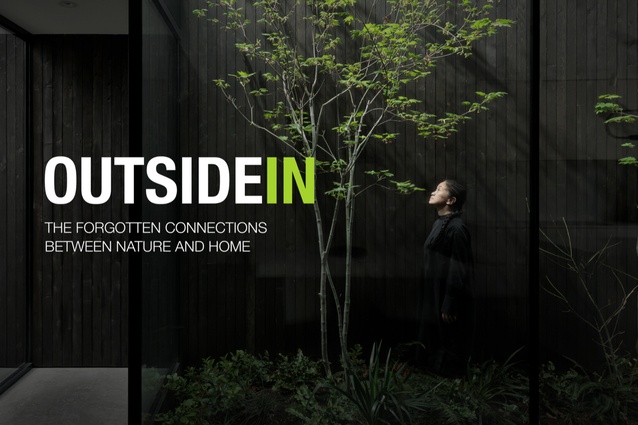
Outside In: The Forgotten Connections Between Nature and Home
Review By Patrick Sheaffer
August 23, 2023
BC Studies no. 218 Summer 2023 | p. 125-127
In the opening segment of Outside In, an unnamed speaker asks “can our buildings actually make us healthier?” The film is subtitled “The Forgotten Connections between Nature and Home,” and while such relationships are promoted in a lengthy segment on the appreciation of houseplants and gardening, a primary focus lies on beneficent effects of the architecture of one new home to support the emotional and physical well being of the family it shelters. The motivation for realizing this house is based on a belief that nature is insufficiently accessible to city dwellers, and that its construction allows the family to enhance well being by moving out of the congested city centre onto an established but otherwise unremarkable suburban neighborhood street.
Setting aside unanswered questions concerning the affordability (and sustainability) of building a custom, single family home in Vancouver (famously proximate to both mountains and sea), the relative health of such a move is debatable without exploring details of design and construction and social connections. Behavioural well-being is not emphasized, and the resemblance to “white flight” inside or outside of Canada is not discussed. It is lamentable that no historic examples illustrating perspectives of traditional indigenous cultures are represented. Content of this nature could support interpretation of this film as representative of significant BC contributions and improve its relevance to professional and academic viewers. While contemporary Canadian ethnic minorities are featured in another suburban home (shown to have been lovingly upgraded over time) and a well-tended urban co-op apartment, a deeper dive is needed to establish diversity credentials and garner street cred. Diversity criterion could also improve prospects for the film’s applicability as an academic reference.
Specialized healthy building practices and interrelations between people of BC and their natural environment are otherwise given minimal attention. Emphasis is placed on attempted dissolution of barriers between outside and inside, but these are limited in scope and amount to basic design strategies that have been expressed in construction systems from every age and context. Again, depth and breadth are helpful to describe the state of the art. Consider for context the response to similar natural forces posed by the Classical Chinese bureaucrat’s Garden or Sir John Soane’s London home, or by 20th century buildings designed for northern latitudes by disparate international innovators like Pierre Chareau, Johannes Duiker, Alvar Aalto, and later by Herman Hertzberger or Ralph Erskine. Such examples would lend context for evaluation in comparable terms, and perhaps guide the narrators to impart a sense of continuing progress, and hope.
The horrors of calamity and imperative to rebuild have inspired innovation to reconnect nature with dwellings, classrooms, sanatoria, offices, and industrial facilities. In the open air of turn of the century Scandinavia and northern Europe, such impulses were demonstrably used to improve access to natural light and fresh air, enhance conditions for work and for learning, and mitigate the prevalence of TB in aging cities. The film’s reference to local health care recovery facilities engaged with nature is a brief yet welcome extension of these precedents. The development of carefully composed glazing and space planning to improve daylighting and connections that made possible healthy living environments still relevant today should be considered a benchmark for ongoing efforts that aspire to improve the quality of all life. Structurally, an introductory overview and conclusion summary would help contextualize these themes within a thesis, introduce speakers, and emphasize intent. Without such explanatory notes, it is up to the viewer to piece together narrative and deduce conclusions. Human memory may be brief, but human physiology has evolved over millennia. Appropriate new development is built on past achievements.
Publication Information
Berish, Danny and Ryan Mah, dir. Outside In: The Forgotten Connections Between Nature and Home. 2022; British Columbia: Black Rhino Creative and Leap Creative Group. Film.
